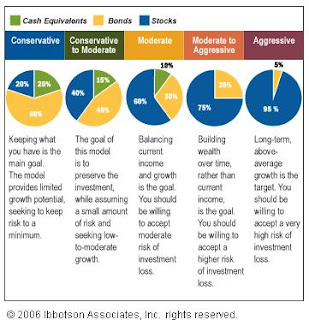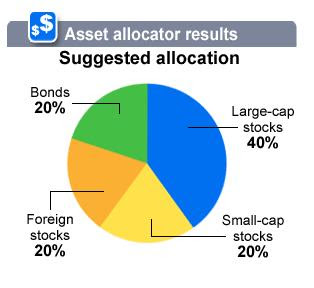
This year I decided to start living frugally and made a conscientious decision to eliminate luxuries and excess fat from my budget. Last week I was pleased to discover that I only spent
$6.75/day for groceries in August.
Please note that this is not an article about how I ate fabulous gourmet meals for less than $7/day. If you’re also looking for tips on how to feed a family of four on less than $7/day, you’re out of luck. I’m just a single gal trying to live on a frugal budget.
Here are some of my tips on how I survived the month of August on less than $7/day for food:
1. I didn’t eat out: Okay, this is a lie. I did go to On the Border Mexican restaurant with my friends for lunch. But, I didn’t spend a dime since I paid my share (including tips) with a gift card I received for my birthday. I also used a $5 off coupon which I shared with my friends.
I generally don’t eat out very much but if I do, I try to go to restaurants for which I have coupons or gift-cards. (See my prior post on how to get
free food from restaurants.) I usually also get my food to-go, so I can save on drinks and tips.
TOTAL COST = $02. I knew what my weekly food budget was and I kept a weekly spending tally: I already know that I can comfortably spend about
$8-$9/day on food. I always save my receipts and tally them over the weekend to see whether I’m overspending. If I am, I adjust my future spending accordingly (See, #3).
3. I ate leftovers: Since the lunch portion at On the Border was generous (not to mention I stuffed up on free chips and salsa), I took home half of my beef burrito (with sides of rice and beans) and ate it for lunch the following day.
Any time I went overbudget for the week, I ate what was already in my freezer and pantry. I didn’t go grocery shopping until I was back on track.
TOTAL COST = $04. Avoid hunger rule #1 - I never skipped breakfast: Every time I’m hungry, I’m tempted to run to the closest In-N-Out Burger for a Double-Double and fries. I keep hunger at bay by eating breakfast everyday. My breakfast normally consists of grapefruit (half), 1 egg (boiled or scrambled), a glass of V-8 juice, tea/coffee and quarter cup of oatmeal with milk. The more sensible my breakfast, the less hungry I am at lunch.
TOTAL COST: $44.005. I planned my meals for the entire week on the weekends and I shopped from a list:
My Debt Blog offers great tips on saving money on groceries. I’m glad to see I follow most of these rules religiously!
 6. I reduced my alcohol / junk food consumption
6. I reduced my alcohol / junk food consumption: I haven’t eliminated these items from my life completely but I don’t drink everyday either. In August, I bought a 6-pack of beer and junk food with my
proceeds from recycling. I also bought a $5.99 bottle of a Sauvignon Blanc from Trader Joe’s that I’ve been drinking over time with a wine preserver spray and pourable wine cork.
TOTAL COST = $87. I don’t expect variety in my lunches: On most Sundays, I prepare a “one-pot wonder” dish that I split into individual servings to take to work for lunch. In August, I made a pot of curry (week 1), a pot of spaghetti sauce (week 2) and a pot of corned beef and cabbage (week 4). I’ll admit that by Thursday, I was usually sick of eating the same stuff. When I really can’t bear to eat it, I freeze it and I splurge on a reasonable take out meal.
Chicken curry: SUBTOTAL COST = $11/week
Spaghetti: SUBTOTAL COST = $9.00/week
Corned beef and cabbage: SUBTOTAL COST = $13/week (only 1/2 of corned beef used)
TOTAL COST: $33 for lunch for 3 weeks8. I made “French” sandwiches for lunch: I traveled for the first time to Paris this May, and had a delightful sandwich that consisted simply of baguette, butter, lettuce, 2 slices of ham and gruyere cheese. It wasn’t stuffed to the gills with meat like most American sandwiches, but it was delicious and filling! (And it’s cheaper than Subway’s $5 footlongs.)
TOTAL COST : $12 for a week’s worth of sandwiches9. Avoid hunger rule #2 - I have snacks in the afternoon: At work, I have a jar of nuts at my desk and frozen bagels in the freezer. I eat a handful of nuts or half a bagel with peanut butter when I get hungry in the afternoon.
TOTAL COST: $510. I supplemented meat with rice, pasta, veggies and beans A LOT: It’s obvious that meat costs way more than vegetables, beans, rice and pasta. Meat, chicken and fish are never the “main items” in my meals. I bulk up a small serving of meat with rice, pasta and beans.
For example, I made one rotisserie chicken ($7.99) last over a week by immediately shredding the entire chicken off the bone and splitting it into individual serving size containers and freezing them. I used each serving of chicken to make: rice bowl (see below), chicken stir-fry, chicken fried rice, chicken and pasta, and ramen (see #12).
I really enjoy making “rice-bowl” dishes since they’re easy, quick and filling. Here’s a recipe for a Japanese comfort food called
oyako-don. I also love
arroz con pollo!
TOTAL COST OF MEAT/FISH/POULTRY: $50.00 TOTAL COST OF RICE/BEANS/PASTA/VEGGIES: $30.0011. I shop at Trader Joe’s and ethnic grocery stores/bakery: I don’t buy perishable food at Costco since I can’t consume everything by myself before it goes bad. (One exception: I bought 3.5 lbs of corned beef from Costco for $11.25. I only used half of it and froze the remainder for later use.)
I shop instead at Trader Joe’s and ethnic markets where items like seafood are much fresher and cheaper. Also, who knew that my local Vietnamese bakery had cheap and delicious baguettes (40 cents per baguette)?
12. I don’t dis the ramen: I don’t care if Top Ramen and Cup O’ Noodle only cost 25 cents each. They’re disgusting. If you have an Asian market in your neighborhood, I recommend you venture into one and ask the store clerk which ramen he recommends. The ramens from Asian markets are of superior quality, tastes great and usually only costs about $1.50 each. With any ramen you choose, add some chopped green onions, some left-over chicken or ham, stir-fried veggies with bean sprouts, a hard-boiled egg and you’ve got yourself an inexpensive, delicious meal.
TOTAL COST: $20.00Well, these are some of the tips that help me get through the month on a tight budget. If you have any tips, please feel free to comment!
 For the past year, I've been coveting this fashionable $300 Knomo computer bag that also doubles as a tote-bag or purse. I travel frequently for business and I've always wanted to combine my purse/computer bag so that I won't need to check any of my bags at the airport.
For the past year, I've been coveting this fashionable $300 Knomo computer bag that also doubles as a tote-bag or purse. I travel frequently for business and I've always wanted to combine my purse/computer bag so that I won't need to check any of my bags at the airport.




































